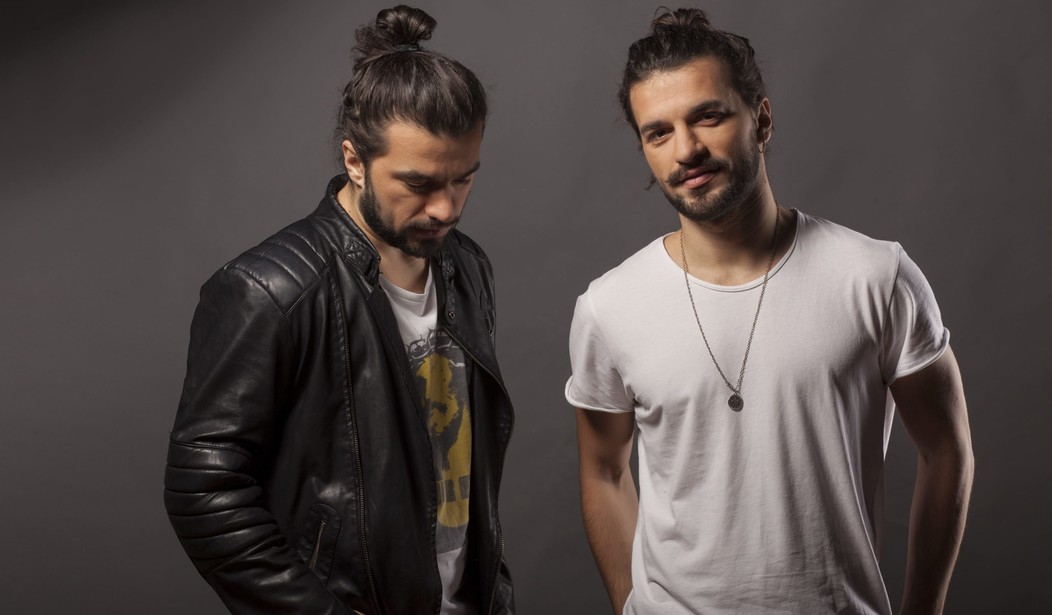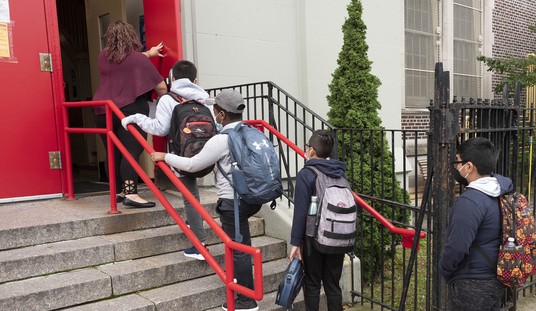A “man bun” is essentially a man who does his hair up in a bun. On most men, this is an awful look. It can even be an awful look on most women.
Let’s consider famous female buns in history.
There’s the ballerina bun, Emily Dickinson’s schoolmarm bun, the Princess Leia French roll bun, and the messy hair bun with chopstick antennae.
Then there is the notorious—and very ugly—top knot bun, or a bun that sits directly on top of the woman’s head like a corn muffin or an apple ready to be shot off with an arrow.
On most women, buns have a severe, restrained look because the hair is pulled back very tightly on the head. This “pulled back” look exposes the bun wearer’s face to undue scrutiny. Everything is accented, from big noses to pimples to large ears but especially big noses because noses always look bigger when the face is not framed by free-flowing hair. Free-flowing hair often acts as an aesthetic distraction or enhancement, and can beautify even the plainest of faces.
Regarding noses, I’m reminded of what writer/novelist Muriel Spark once wrote. The nose, she said, “Is our tether between spirit and substance.” She quotes Genesis: “the Lord God formed man of the dust of the ground, and breathed into his nostrils the breath of life, and man became a living soul,” then adds, “The first thing that happened to Adam happened to his nose. Therefore the nose is an emblem at once of our dusty origin and our divine.”
Getting back to buns: A bun that sits on the very top of a woman’s head has a buffoonish look, recalling the Judy Collins song, Send in the Clowns, whereas a bun that rests behind the head (like a ponytail) has a more refined and cultivated look.
The majority of women, it seems, wear buns when they don’t have time to “do” their hair: the bun is the end result of a hair emergency. Sometimes a bun can be a work-related necessity. Ballerinas, for instance, do their hair up in buns to avoid getting hair in their faces during performances. Yet this does not mean that ballerinas have to keep the bun look off stage.
The advent of the “man bun,” however, is proof positive that Western civilization has not only “ended” but is now in that anarchic post-apocalyptic phase known as the Theatre of the Absurd.
Why a man would want to put his hair up in a bun is one of those questions that cannot be answered simply. Is it because he is feeling pretty or feminine?
Most of the “man buns” I’ve seen have been on male model types who have little to lose by going “ugly.” In other words, because these men tend to be extremely attractive, they can afford to take gross liberties with their looks.
A partially balding man with bifocals who struggles with weight problems might be advised to stay away from the “man bun,” because, as is the case with women with top knot muffin buns, it will only showcase his physical imperfections.
So, what kind of man (besides models) wears the “man bun”? Perhaps he’s a sensitive, artistic type, a musician, band promoter, artist or a (music) sound control engineer who wishes that he were a musician….
To understand the perversity of the “man bun,” let’s quickly recap the recent history of male hair.
When long hair for men first came on the scene, public reaction was not good. In the late Sixties, high school students were expelled from school for refusing to cut their hair. Newspaper articles showcased debates on the “ethics” and “morality” of long hair on boys and men.
Long hair was associated with the Beatles and then with radical politics. It was a badge showing sympathy or identification with anti-war demonstrations and the 1960s counter culture. Animosity against long hair was intense; it bordered on outright hatred. Suburban home dwellers, truck drivers, World War II vets, policemen, and businessmen of every stripe heaped scorn and ridicule on long hairs. Long-haired hitchhikers were sideswiped off the road; not hired or fired from jobs; or called fags or chicks. Intolerance ruled the airwaves. People were not nice.
Then, suddenly, long hair on men stopped being about politics. Yale-educated political conservatives with long locks began appearing on William F. Buckley’s Firing Line. Those same truck drivers who used to run hippies off the road were now sporting hippie hairstyles. The same was true for those motorcycle gangs who used to castigate “peacenik” hippies. In the meantime, “dangerous” political radical types contented themselves with the retro-beatnik goatee.
Ira Einhorn, Philadelphia’s Earth Day founder and self-styled New Age guru, copied the long hair and beard styles of Abbie Hoffman and poet Allen Ginsberg. Einhorn, of course, was charged with the murder of his girlfriend, Holly Maddux, in 1979, and became the target of a massive FBI hunt after he fled to France to escape prosecution.
Charles Manson certainly denigrated the long hair and beard look with his nefarious deeds.
“The culture of hair is most obvious in the United States,” writes French journalist Hadrien Laroche in his book, The Last Genet, about the famous playwright and novelist Jean Genet. Laroche quotes Genet on hippie hair: “Any style would do, apparently: long; medium length; with a fringe; straight; black and greasy; flowing; all over the place, brown and frizzy; blonde and curly…This fashion, carried to extremes and even beyond in England, was born in California and grew out of the American army’s reverses in Vietnam…”
One of the most interesting “hair” things that Laroche discusses in his book is the development of the Afro and outrageous hair among blacks at that time.
Laroche mention’s Ralph Ellison’s book, Invisible Man, and then elaborates on the slogan of those times, Black is beautiful, stating that “men who had been hidden now became visible…by provocation by hair and outrageous hair styles.”
The contemporary “man bun” is not ideology-free. If one were to reduce the “man bun” to politics it would be the politics of personal narcissism, but it also smacks of far-left progressivism. The “man bun” is a cosmetic provocation on all fronts, something that proclaims, “I’m different,” and “I am more radical than thou.”
Let me suggest that when a man has nothing to rebel against—let’s say he’s a super “normal” type totally in step with the cultural status quo– then there’s nothing to distinguish him from the invisible masses all around him. One solution to this might be to deviate cosmetically so as to establish a surface rebellion or a look — the man with the Iroquois haircut who hates the anonymity that working as a bank teller brings or the man who tattoos his neck or forehead because he never made it as an artist and he wants to be noticed by any means possible.
The “man bun” also toys with notions of androgyny and that (already) overworked and annoying phrase, gender fluid, although it does so in a contrived, unattractive French maid kind of way.
After all, if most women don’t look good in buns, the numbers quadruple a hundred times over with men.









Join the conversation as a VIP Member